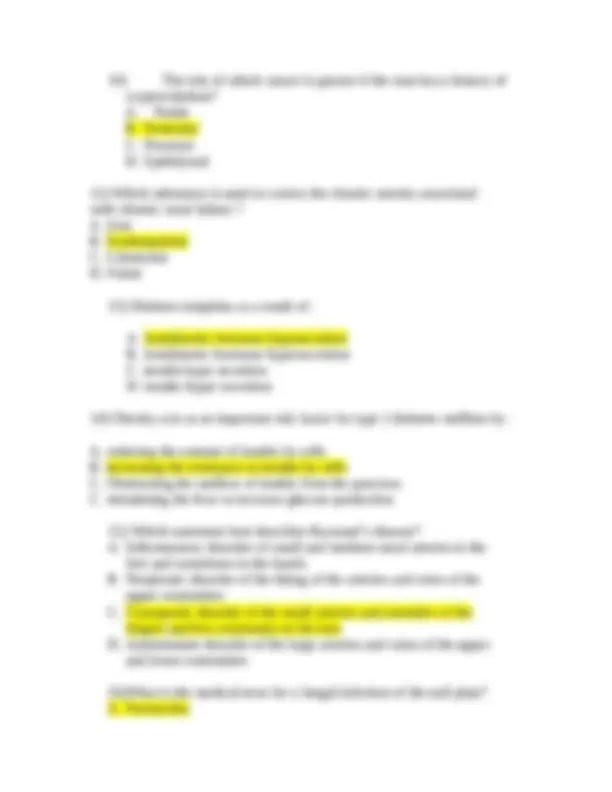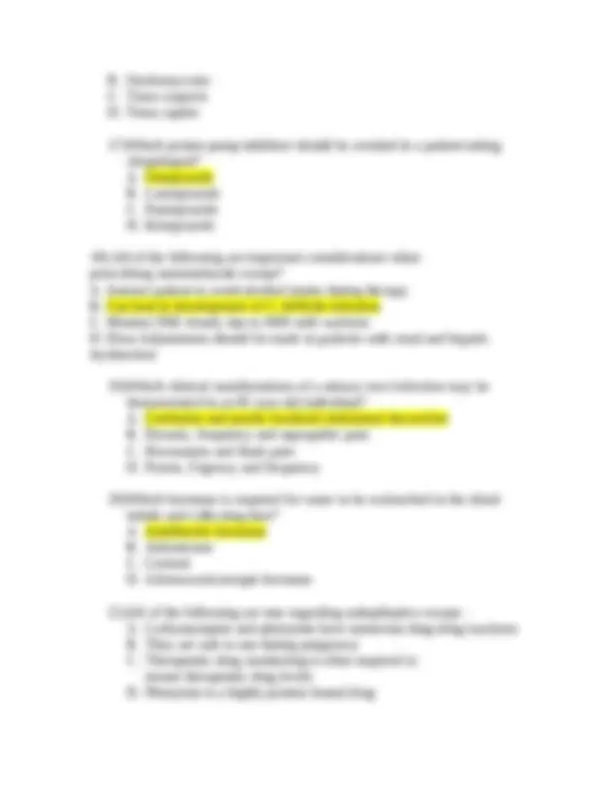





Study with the several resources on Docsity

Earn points by helping other students or get them with a premium plan


Prepare for your exams
Study with the several resources on Docsity

Earn points to download
Earn points by helping other students or get them with a premium plan
Community
Ask the community for help and clear up your study doubts
Discover the best universities in your country according to Docsity users
Free resources
Download our free guides on studying techniques, anxiety management strategies, and thesis advice from Docsity tutors
A comprehensive final exam for nur 641, covering advanced pathophysiology and pharmacology concepts relevant to nurse educators. It includes multiple-choice questions that assess understanding of various disease processes, medications, and their clinical applications. The exam is designed to evaluate the student's knowledge and ability to apply these concepts in real-world nursing practice.
Typology: Assignments
1 / 6

This page cannot be seen from the preview
Don't miss anything!




NUR-641EAdvanced Pathophysiology and Pharmacology for Nurse Educators
D. The host defense mechanism and the immune response
B. Onchomycosis C. Tinea corporis D. Tinea capitis 17)Which proton pump inhibitor should be avoided in a patient taking cliopidogrel? A. Omeprazole B. Lansoprazole C. Pantoprazole D. Rabeprazole